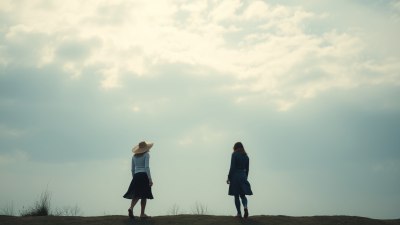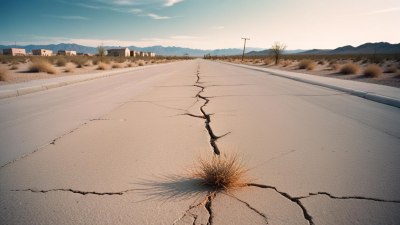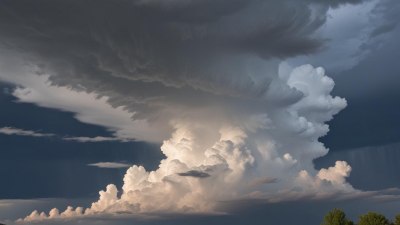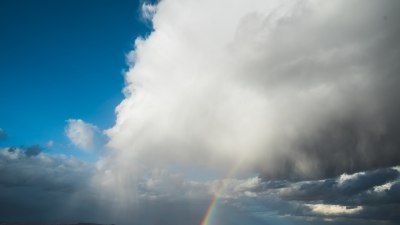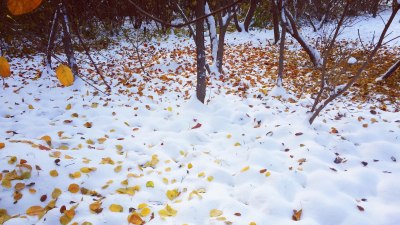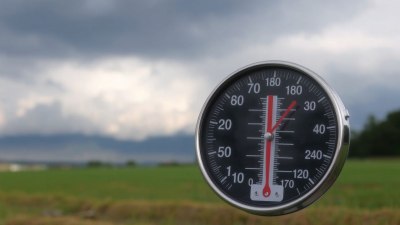Can a Rainbow Appear at Night The Rare Beauty of Lunar Rainbows
Discover the enchanting phenomenon of lunar rainbows, their formation, and tips for viewing this rare beauty at night.
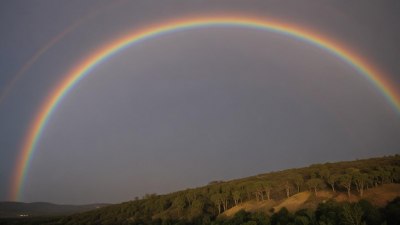
This image was created with the assistance of Freepik
Lunar rainbows, often referred to as moonbows, are a captivating and rare natural phenomenon. Unlike their daytime counterparts created by sunlight, lunar rainbows are produced by moonlight. This enchanting occurrence brings forth a question that many people ponder: can a rainbow actually appear at night? The answer is yes, and the beauty of a lunar rainbow is a sight to behold, though it is not commonly seen.
To understand how a lunar rainbow forms, it is essential to look at the conditions required for its existence. Just like a traditional rainbow, a moonbow forms when light interacts with water droplets in the atmosphere. The light from the moon, usually a full moon, refracts and reflects within these spherical droplets of water, creating a spectrum of colors. However, since the intensity of moonlight is significantly less than that of sunlight, lunar rainbows tend to be fainter and often appear white or colorless to the naked eye.
The Science Behind Lunar Rainbows
For a lunar rainbow to form, certain conditions must be met. The moon needs to be bright and nearly full, as the light from a crescent moon is not strong enough to create a visible rainbow. The sky also needs to be dark, ideally without any light pollution from urban areas, and there should be rain or mist in the air to create the necessary water droplets for the light to interact with. This perfect combination of conditions is what makes lunar rainbows such a rare sight.
The process of how light interacts with water droplets is similar for both solar and lunar rainbows. When light enters a water droplet, it slows down and bends, a phenomenon known as refraction. Once it exits the droplet, it reflects off the inside surface and bends again, creating the beautiful arc of colors. However, due to the lower intensity of moonlight, the colors of a lunar rainbow may not be as vivid as those seen during the day.
Where and When to See Lunar Rainbows
Seeing a lunar rainbow often requires planning and a bit of luck. One of the best places to observe this phenomenon is near large bodies of water, such as lakes or ocean shorelines, where the mist can help create the necessary water droplets. National parks and areas away from city lights provide the best opportunities to view lunar rainbows, as they ensure a darker sky. Rainy seasons or post-storm conditions increase the chances of witnessing this beautiful event when the moon is full.
Time is also an essential factor when hunting for lunar rainbows. Since moonbows can typically occur between dusk and dawn, the best time to view them is often a few hours after sunset or just before sunrise. The brightness of the moon is critical as well - only during a full moon will the light be sufficient to produce a visible moonbow. Therefore, checking lunar phases in advance can help enthusiasts plan their moonbow watching trips effectively.
The Cultural Significance of Lunar Rainbows
Throughout history, lunar rainbows have fascinated people across different cultures and have often been viewed as mystical or magical phenomena. Many indigenous cultures attributed spiritual significance to moonbows, incorporating them into stories and myths. Some viewed them as omens or symbols of good luck. For example, in Hawaiian culture, moonbows are often referred to as “nalu,” symbolizing peace and tranquility.
In literature and art, lunar rainbows have inspired various works, symbolizing hope, beauty, and elusive dreams. Artists and poets have incorporated the imagery of moonbows into their creations, allowing the beauty of this phenomenon to transcend time and culture. The rarity of this event makes it all the more special and frequently serves as a reminder of nature's breathtaking wonders.
Photographing Lunar Rainbows
Capturing the beauty of a lunar rainbow on camera can be a challenging undertaking, primarily due to the low light conditions and the faintness of the phenomenon. However, with the right techniques and equipment, photographing a moonbow can yield stunning results. A tripod is essential for stabilizing the camera during long exposure times, which is necessary to capture the elusive light of the moonbow.
Using a wide aperture and a high ISO setting can help in capturing as much light as possible. Long exposure times, often around 15-30 seconds, allow the camera sensor to collect more light, revealing the rainbow’s colors that may be too faint for the naked eye to see. Post-processing is also a useful tool for enhancing details and colors in the image, making the moonbow more visible. Many photographers recommend experimenting with different settings and techniques to find the best combination that suits the lighting conditions and scene.
Challenges in Observing Lunar Rainbows
Despite the magic and beauty of lunar rainbows, observing one can be fraught with challenges. The specific weather conditions required for a moonbow to form can be unpredictable. Clouds can obstruct the view of the moon, and pollution can diminish the brightness necessary for the phenomenon to occur. Therefore, it often takes patience and persistence for individuals hoping to catch a glimpse of a lunar rainbow.
Furthermore, many people are simply unaware of the existence of moonbows or do not know how to recognize them. Educational resources and community events can help raise awareness about this natural phenomenon and train enthusiasts on how and where to look for moonbows in their area. Organizations dedicated to astronomy and photography often host events centered around moon phases, including comprehensive guides on timing and locations ideal for observing lunar rainbows.
The Connection Between Lunar Rainbows and Other Natural Phenomena
Lunar rainbows are part of a larger family of optical phenomena that can occur in the atmosphere. Other phenomena, such as halos, sundogs, and auroras, share similar formation processes. While a lunar rainbow requires water droplets, halos are formed by ice crystals in the atmosphere. Observing these different phenomena can deepen one’s appreciation for the complexities of our atmosphere and the beauty it can produce.
Additionally, lunar rainbows often coincide with the appearance of other atmospheric conditions, such as fog or mist, which can enhance the overall viewing experience. The ethereal glow of fog combined with the soft light of a moonbow can create breathtaking landscapes that capture the imagination and evoke a sense of wonder.
The Beauty of Lunar Rainbows
In conclusion, lunar rainbows are a breathtaking and elusive phenomenon that captivates those fortunate enough to experience them. With the right conditions, a little patience, and determination, witnessing a moonbow can become a cherished memory. As we continue to explore the natural wonders of our world, understanding and appreciating phenomena such as lunar rainbows serves as a reminder of the beauty that exists in the universe, even in the darkest of nights. So, the next time you find yourself under a bright full moon, consider standing outside after a rain shower—who knows, you may just be lucky enough to spot this rare and glorious sight!
